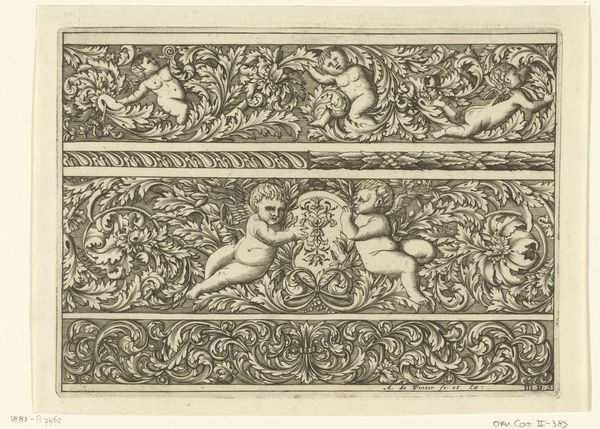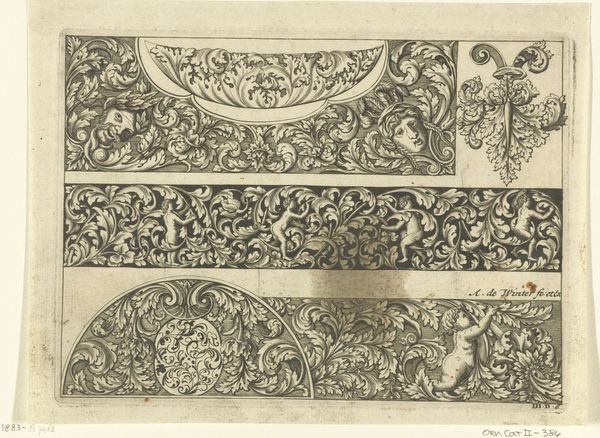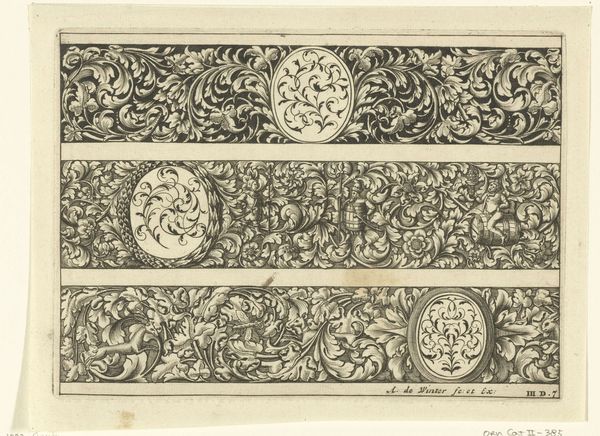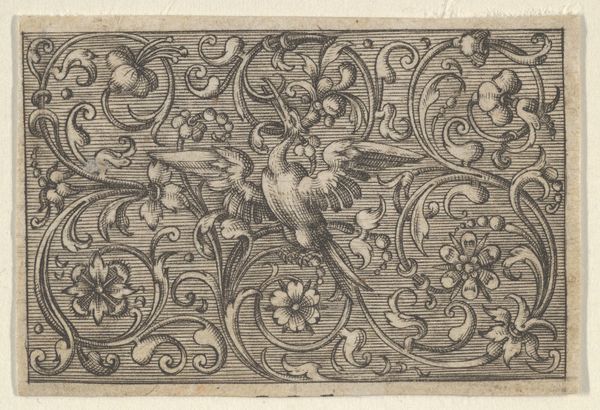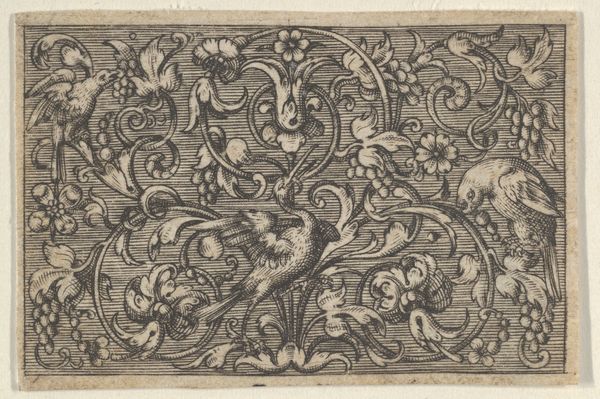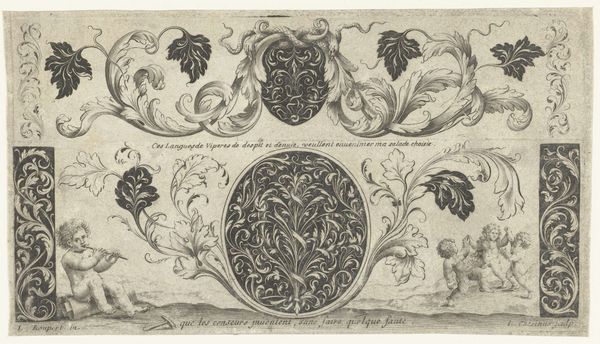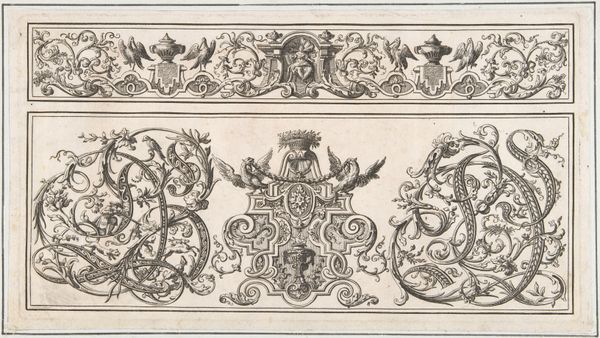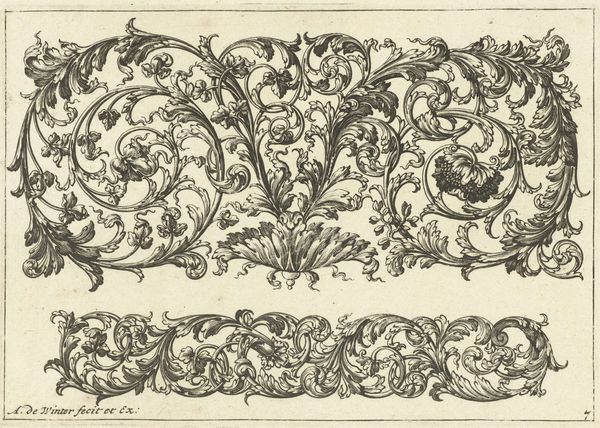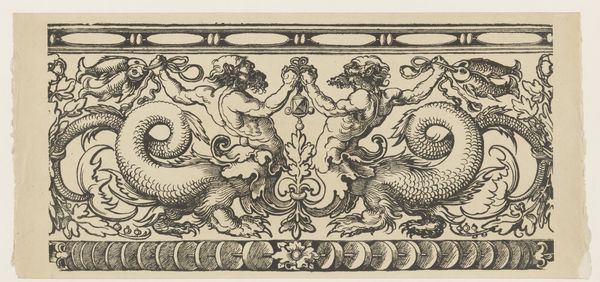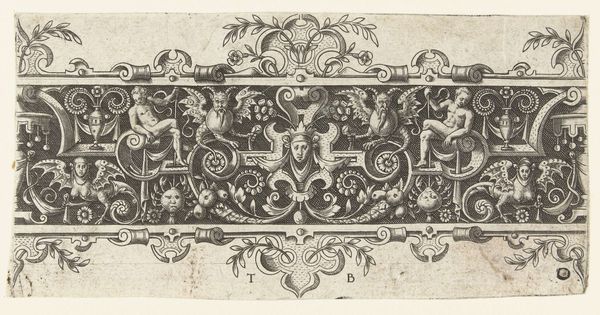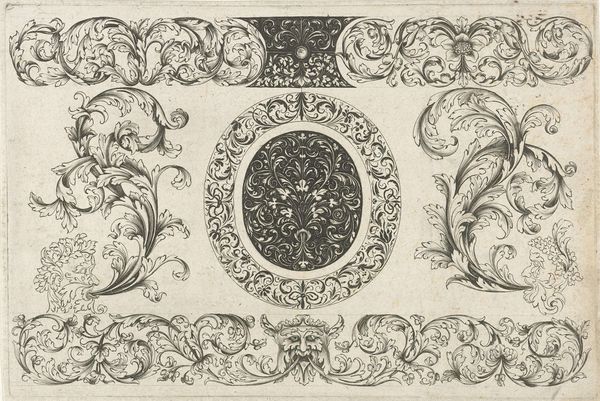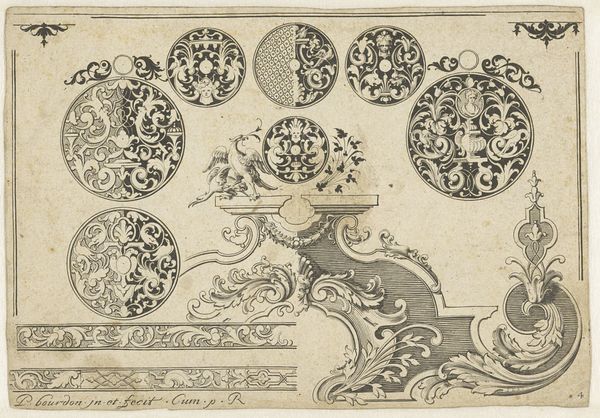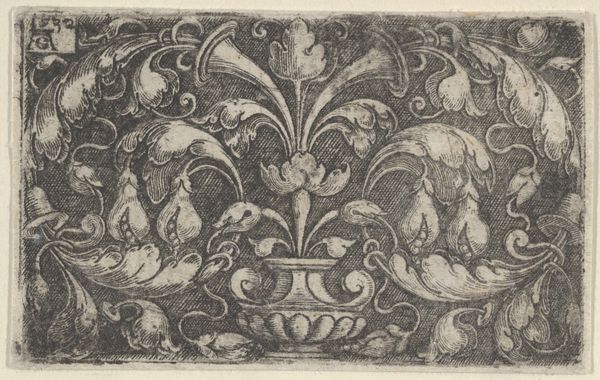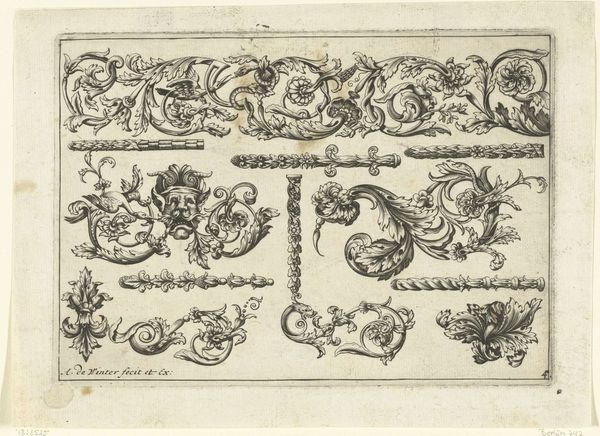
drawing, engraving
#
drawing
#
baroque
#
pen drawing
#
figuration
#
line
#
engraving
Dimensions: height 137 mm, width 189 mm
Copyright: Rijks Museum: Open Domain
Editor: This piece, “Drie friezen met bladranken” or “Three Friezes with Foliage,” was created around 1696 by Anthonie de Winter, using engraving techniques. It's incredibly detailed; the patterns are so dense. I'm struck by the stark contrast of light and dark. How do you interpret this work? Curator: Primarily, I observe a mastery of line. Consider how the varying thickness and density of the engraved lines construct form, texture, and depth, all without recourse to color. Note the formal arrangement: three distinct horizontal registers, each containing variations on the theme of vegetal ornamentation, punctuated by human figures. The interplay of organic and figurative elements contributes to the work's dynamic tension. Do you see how the foliate scrolls both contain and release the figures? Editor: Yes, I see what you mean. The figures seem almost trapped within the foliage in some areas and freely floating in others. It’s interesting how the artist created this effect simply with lines. Curator: Precisely. Furthermore, attend to the systematic repetition and variation. Observe how individual motifs, such as the acanthus leaf, are subtly transformed and recombined across the three registers. This creates both a sense of unity and a pleasing visual rhythm. It speaks to the engraver's facility with pattern making and geometric structures that ground the artpiece. Editor: I see, now that you point that out, how the repetitions work with the baroque style! Thank you. This deeper visual exploration helps to better understand the intent of de Winter. Curator: A close inspection and attention to form reveals that which is at its essence.
Comments
No comments
Be the first to comment and join the conversation on the ultimate creative platform.
